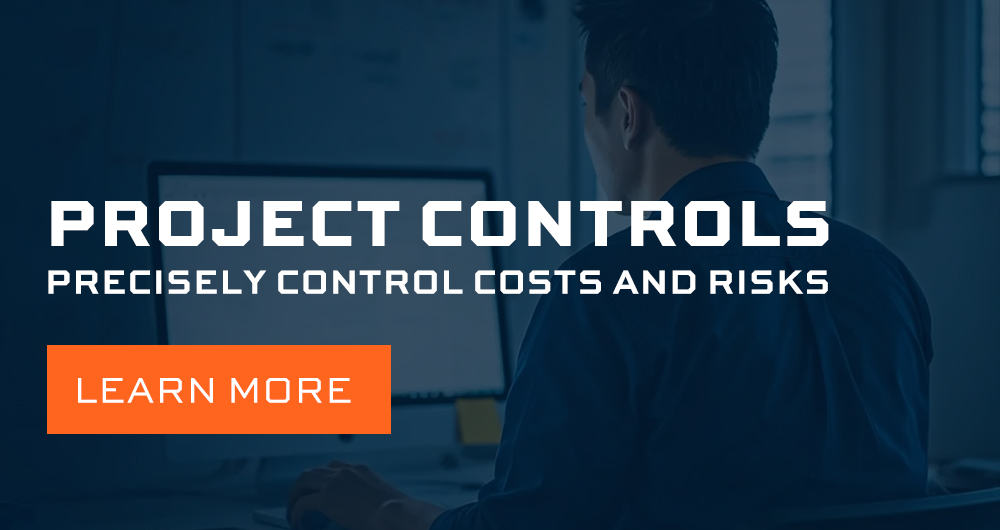Today, in construction’s fast-paced and complex world, owners and operators face the ongoing challenge of making critical decisions that impact their projects’ success.
To ensure informed decision-making, it is imperative for any owner/operator to gather, organize, and present vital data effectively. With this goal, let’s explore strategies and best practices for optimizing data management, and then leveraging it to drive operational excellence in construction.
Identifying Key Data Sources
To begin the process, owner/operators need to identify the critical data sources relevant to their operations. In the oil and gas sector, this could include geological data, production reports, safety records, and equipment performance metrics.
In the vertical construction sector, sources may include project schedules, cost estimates, subcontractor data and safety incident reports. It is essential to clearly define and prioritize the data sources to ensure accuracy and relevancy.
Leveraging Technology for Data Collection
Technology plays a vital role in streamlining data collection processes. Owner/operators should embrace digital solutions such as sensors, IoT devices, and mobile applications to capture real-time data. For example, sensors can provide critical information about critical operating systems’ temperature, pressure, and flow rates.
At the same time, mobile applications can track construction progress and document site conditions throughout execution. These technologies enable efficient and accurate data collection, minimizing manual efforts and saving time.
Real-time data integration is especially valuable in the fast-paced and complex construction industry. By connecting data visualizations to live data feeds, owner/operators can monitor project performance and other critical metrics in real time. This capability allows for proactive decision-making, timely interventions, and immediate response to emerging issues.
Implementing a Centralized Data Management System
Once data is collected, it must be organized and stored in a centralized management system. Cloud-based solutions offer flexibility and accessibility, allowing owner/operators to access vital information anytime.
A robust data management system should include data categorization, metadata tagging, and user access controls. This centralization promotes data integrity, prevents duplication, and enables seamless team collaboration.
Data Visualization for Enhanced Decision-Making
Raw data alone may not effectively communicate insights to owner/operators. Therefore, transforming data into visually appealing and easy-to-understand formats is crucial. Data visualization tools, such as graphs, charts, and dashboards, can aid in presenting complex information concisely. For instance, interactive dashboards can provide real-time project status updates, equipment performance metrics, and safety statistics. Using visualizations, owner/operators can quickly grasp trends, patterns, and anomalies, making informed decisions efficiently.
Visualizations allow for identifying correlations and causations, enabling more accurate and insightful decision-making. However, balancing simplifying the data and ensuring the critical details are not lost is essential.
Data visualization should not only present data but also tell a story. By carefully designing the flow and narrative of visualizations, owner/operators can guide teams through the insights and implications of the data. Compelling visualization that tells a compelling story can capture stakeholders’ attention and evoke a deeper understanding and engagement with the data. Adding annotations, captions, and contextual information helps to frame the data within a meaningful context and reinforces the narrative.
Applying Analytics and Machine Learning
Incorporating advanced analytics and machine learning algorithms can unlock valuable insights from gathered data. Predictive analytics can help owners anticipate equipment failures, optimize maintenance schedules, and identify potential risks. Machine learning algorithms can analyze historical project data to identify productivity bottlenecks, optimize resource allocation, and improve project scheduling accuracy. By leveraging these technologies, owner/operators can enhance operational efficiency and drive cost savings.
Collaboration and Communication
Data-driven decision-making should not be limited to individual owner/operators. Collaborative platforms and communication channels should be established to share insights and foster collective intelligence.
Regular meetings and reports incorporating key performance indicators (KPIs) enable stakeholders to align their efforts and make informed decisions.
Transparent communication channels help create a shared understanding of data-driven goals and facilitate continuous organizational improvement.
Continuous Monitoring and Iterative Improvement
Data management is not a one-time task but an ongoing process. Owner/operators should continuously monitor and evaluate the effectiveness of their data management systems and processes. Regular reviews of data quality, relevance, and performance metrics will help identify areas for improvement.
By iterating and refining their data management practices, owner/operators can adapt to changing project requirements and emerging industry trends effectively.
What’s the Endgame?
Owner/operators must harness the power of data to drive operational excellence and achieve project success. Following the strategies discussed above makes gathering, organizing, and presenting vital data a streamlined process.
Embracing technology, leveraging analytics, and fostering collaboration enable owner/operators to make informed decisions that optimize project performance, enhance safety and quality, and drive overall business success in these dynamic construction industries.
Ready to take a deeper dive? Schedule a one-on-one consultation to discover how InEight can help you succeed in your construction digitalization journey.




